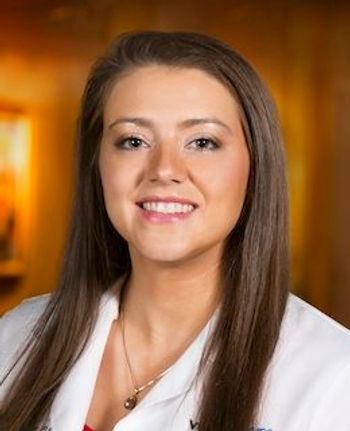
New eye drops could cure cataracts
Researchers from the University of California, San Diego, have developed an eye drop solution that may dissolve cataracts, according to a study recently published in Nature.
San Diego, CA-Researchers from the University of California, San Diego, have developed an eye drop solution that may dissolve cataracts,
Molecular biologist Ling Zhao and her team developed the eye drop after finding that children with a genetically inherited form of cataracts shared genetic aberrations in an enzyme called lanosterol synthase. This genetic mutation shut down the production of lanosterol-an oily compound found in the skin.
Researchers suspected that lanosterol prevented the clumping of proteins in the eye.
Related:
Testing lanosterol drops
The UC San Diego team tested a lanosterol solution in three experiments.
First, the solution was tested on human lens cells to see how effectively the lanosterol shrank lab models of cataracts. The researchers observed a significant decrease, leading them to believe the lanosterol breaks apart the crystalline clumps like detergent splits dirt.
Second, researchers tested the solution on rabbits with cataracts. At the end of six days, the cataracts in 11 of the 13 rabbits had gone from severe or significant to mild or no cataracts at all.
For the final test, researchers moved onto dogs, testing the solution on a group of seven black Labs, Queensland Heelers, and Miniature Pinschers, all with naturally occurring cataracts. Researchers administered the solution both in the form of an injection and eye drops. Over the course of six weeks, the dogs’ lenses showed the same dissolving pattern shown in the human and rabbit lens cells. To see the before-and-after photos,
The researchers say that the
The end of cataract surgery?
Could these drops be the beginning of the end of cataract surgery?
“We show that lanosterol plays a key role in inhibiting lens protein aggregation and reducing cataract formation, suggesting a novel strategy for the prevention and treatment of cataracts,”
“In addition, our results may have broader implications for the treatment of protein-aggregation diseases, including neurodegenerative diseases and diabetes, which collectively are a significant cause of morbidity and mortality in the elderly population, by encouraging the investigation of small-molecule approaches, such as the ones demonstrated here,” they write.
Related:
If the lanosterol solution proves to be as successful in human trials, it could not only have a significant impact for patients, but also for optometrists. ODs could see big changes in the cataract comanagement landscape.
“These drops would certainly be a huge addition to the optometric treatment arsenal, and cataract surgery could theoretically become completely refractive,” says Tracey Schroeder-Swartz, OD, MS, education chair for the Optometric Council for Refractive Technology. “I am interested to see how this affects presbyopia as well. If it could reverse both presbyopia and cataracts, it would be a game changer.”
Scott Hauswirth, OD, FAAO, says he'd like to see further research because this isn't the first study to claim to combat cataracts.
"Several products in the past decade have touted the ability to do this from either a preventative or reversal standpoint," he says. "Some have even begun FDA trials, but none have completed it-for example, a company called Chakshu had a Phase II trial a few years ago.
"At this juncture, lanosterol-which is kind of a 'backbone' of other steroids and cholesterol-is in very early stages of research. The research in peer-reviewed literature has been mostly animal studies, and needs to be verified and repeated by a number of different sources and make it through an FDA trial for both efficacy and safety before it will be available for the public to take," says Dr. Hauswirth. "We’ve got a long way to go before we get there. So, the sensationalism is exciting, and it’s always great to have some promise of a new compound which can help a great number of people, but let’s see how the next round of testing goes before we get carried away."
Science looking for chemotherapeutic therapies
“In my fourth year of optometry school in 1988, I had a call from one of my relatives who wanted to know if I had heard of ‘succus cineraria maritima,’ and if I could find some for him to get rid of his cataracts,” says Optometry Times Editorial Advisory Board member Mohammad Rafieetary, OD, FAAO. “Oddly at the time, this homeopathic remedy was listed in the Physicians’ Desk Reference (PDR) for Ophthalmology-as a grandfather agent-but not commercially available in the U.S. Twenty-seven years later, you can go on the Internet and find this homeopathic agent and order a bottle with the claim to heal a number ocular disorders.
“I am not comparing what is mentioned in this article to the study’s agent, but I am merely suggesting that science has been looking for chemotherapeutic therapies for many conditions that in the past and present have had only mechanical/surgical remedies,” he says. “Scientific explorations in this line has resulted in many triumphs as well as failed attempts.”
Dr. Rafieetary says that most degenerative conditions in nature happen as a result of altered chemicals in our body, so it is not hard to believe that science should be able to find antidotes to either stopping or reversing tissue alteration.
“Beyond the efficacy of such antidotes, we have to be more concerned with the safety and potential side effects,” he says. “I am very excited to hear about a topical treatment for cataracts but have to wait for further studies to show that ‘a solution tested in dogs that may be able to dissolve the cataract right out of the eye’s lens’ is safe and effective in humans.”
Related:
© ARZTSAMUI/Shutterstock.com
Newsletter
Want more insights like this? Subscribe to Optometry Times and get clinical pearls and practice tips delivered straight to your inbox.


















































.png)


